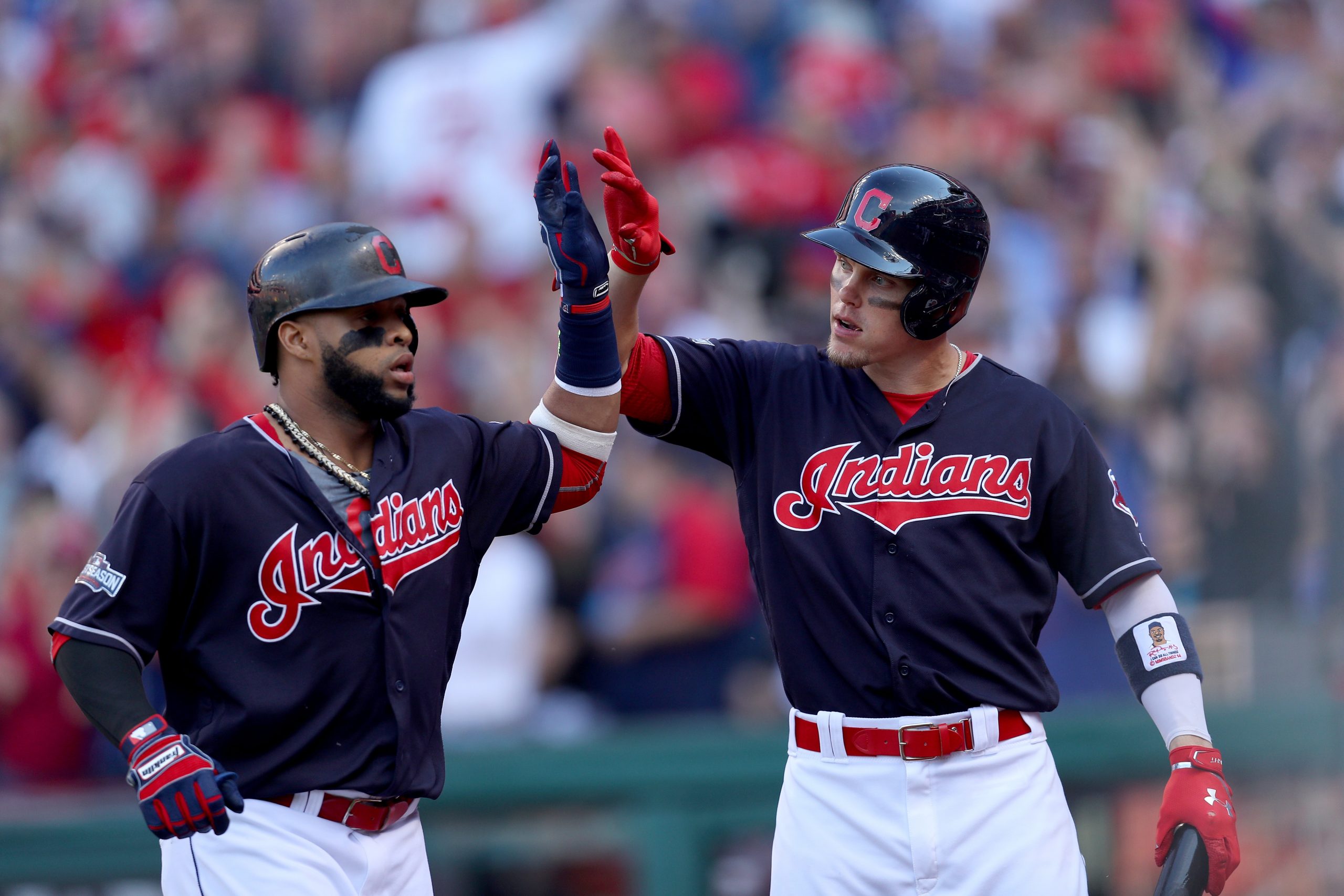When Mike Chernoff pulled the trigger on the deal that sent outfielder Nathan Lukes and pitcher Jhonleider Salinas to Tampa Bay, he was likely thinking about just one thing: the 2016 post-season.
He needed someone who was play-off eligible to platoon with Lonnie Chisenhall since Abraham Almonte and Marlon Byrd were both suspended for PED use during the season. While it wasn’t the sexy deadline pick-up (that was Andrew Miller), Guyer gave Terry Francona a much more versatile roster, allowing him to platoon in either left or right field with two left handers, Chisenhall and Tyler Naquin, and two right handers, Rajai Davis and Guyer.
To start, we already discussed the minor leaguers given up in the deal when it happened, but while neither is a bad player, both are so far down the MiLB depth chart that they were never likely to see the light of day. Salinas was one of the most consistent pitchers for the AZL team this year, but is already old for the level and well behind other pitchers in his generation, like Brady Aiken, Triston McKenzie and even 2016 picks Shane Bieber and Aaron Civale. He could play in the Majors some day, but most likely never would have got there with the Indians.
Lukes is further along in his MiLB career, playing in Advanced A, but was arguably even further down the organizational depth chart with Anthony Santander, Greg Allen and Bradley Zimmer miles above him. Essentially, the Indians gave up nothing to obtain Guyer.
This move would have made sense for the Rays if Guyer was in the last deal of his contract, getting something for nothing as they finished in dead last in the East, 16 games out of fourth, but that is not the case. Instead, it seems they greatly undervalued Guyer, who just finished his first arbitration eligible season making $1.185M.
Beyond leading the AL in hit by pitches for two straight years, Guyer has quite a few other marketable skills. While he was obtained as a specialist against left handed pitchers, when with the Indians he actually hit better against the few right handers he faced, batting .348. This is likely a small sample size situation as he’s hit .236/.307/.337 against right handers, but his .289/.391/.470 line against lefties is significant as it spans 541 at bats. Considering that the switch hitting Almonte and the left handed Chisenhall can’t hit left handers at all, it is that aspect that the Indians need most.
In addition, unlike many of the outfielders the Indians trotted out during the latter half and play-offs of 2016, Guyer is good defensively. He has positive marks in all three outfield positions with a career 6.5 UZR/150 in left, 1.6 in center and 2.6 in right, averaging to a 5.3 across all outfield positions. While this isn’t Gold Glove quality, it’s vastly superior to an outfield featuring Coco Crisp or Naquin.
Finally, all those HBP’s do count for more than bruises. While he doesn’t walk a ton (61 times in 1,074 PA), Guyer’s HBP’s have raised his OBP to an acceptable .349 in his career and a .372 in 2016 (.438 in Cleveland). While this isn’t really a skill, some players do have a tendency to get hit more often than others and sometimes, like with Craig Biggio who lead the league five times in HBP and was hit by at least 10 in 11 straight years (averaging 22 per season from 1995 through 2005), that trend can continue for years. By standing close to the plate and not moving when a ball comes near him, Guyer gives pitchers a reason to stay away. As the chart below from BrooksBaseball shows, this is exactly what Guyer wants.
On pitches low and away, Guyer hit .435 this year. On those low and middle, he hit .531. On all combined inside pitches, he went 18 for 88, batting .204. Guyer doesn’t want a pitch inside, so he’s less likely to swing at one coming at him off the plate. By not swinging or moving, he has managed to make getting hit by a baseball a skill.
This skill, along with his defense and platoon splits make him a nearly guaranteed regular for the Tribe in 2017. Heading into his second season of arbitration, Guyer is expected to make about $2M (according to MLBTradeRumors), one of many escalating contracts for the Tribe, but one that isn’t particularly significant. At that low cost and one likely just slightly higher in 2018, there is no reason that Guyer shouldn’t play out the rest of his years of team control with the Tribe, proving the kind of reliable production once sought for with players like Byrd and Ryan Raburn before him, only without being ancient and unable to move.
Add The Sports Daily to your Google News Feed!

